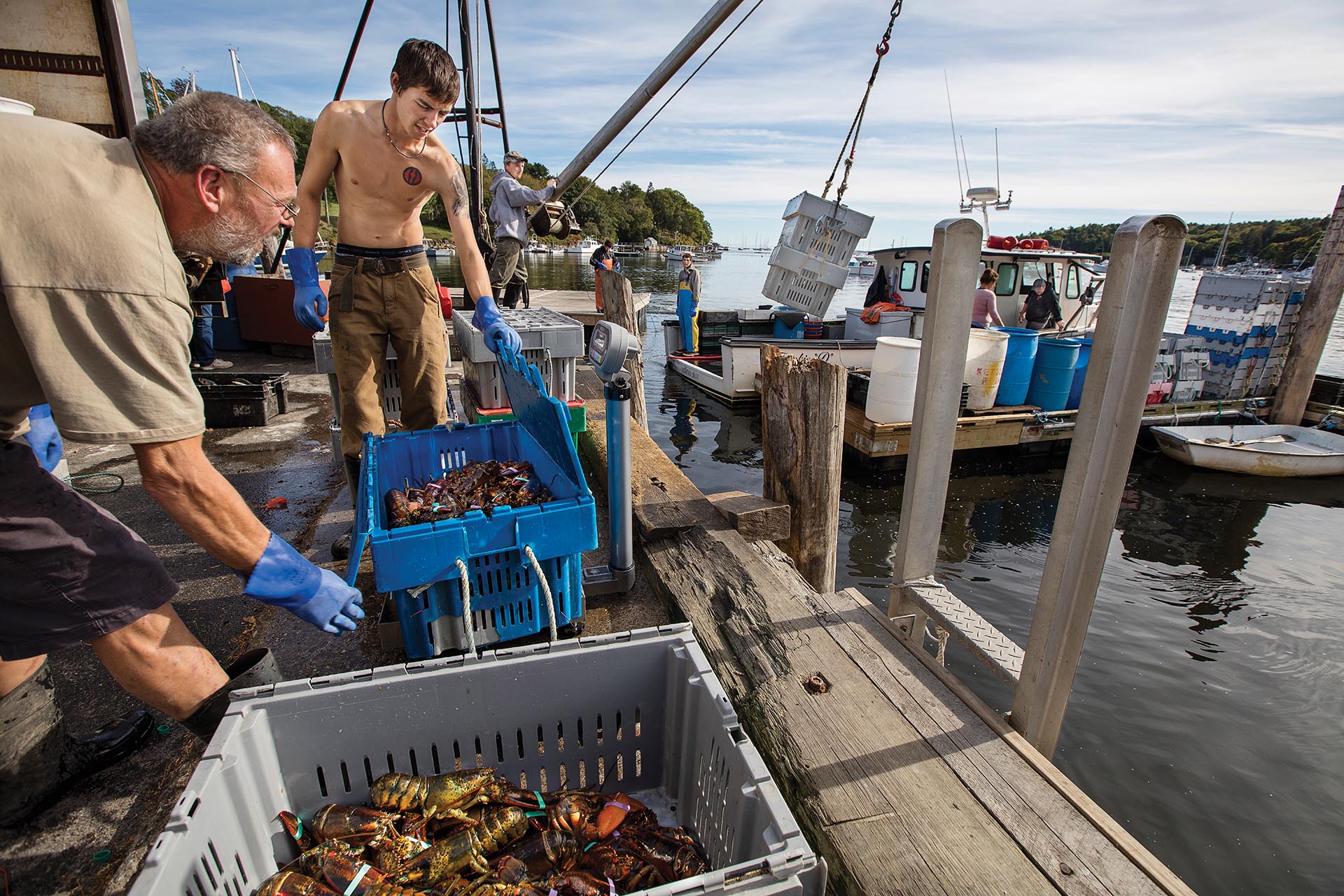It is 4:30 this morning, not a streak of light on the horizon in the eastern sky as the first full-throated growls of marine diesels come to life and begin their ghostly procession out into the inky pre-dawn blackness. Their halogen lights cast an eerie loom over their shimmering wakes.
After a long winter, the waters off the Maine coast have warmed to the point that lobsters have begun to crawl toward shore seeking protective shelters. There, they split their shells apart and struggle out of their protective armor, growing to a larger size in the process. Once their new shells have hardened within a few weeks, they are ravenously hungry. Millions of them scavenge along the bottoms of Maine’s intricate geography of bays, reaches, coves and creeks, waving their antennae to pick up scents that lead them to food, which lobstermen are only too happy to provide.
In 2014, Maine lobstermen harvested more than 124 million pounds of lobster worth close to half a billion dollars from Maine’s 5,000 miles of saltwater coastline. It takes the hands of thousands of workers on ships and shores to keep that supply chain moving.
Aboard the lobster boats departing the harbor, a lobsterman’s helper, called a sternman, is busy spearing salted herring from bait totes and stuffing this reeking repast into knitted bait bags. The captain rounds up, heads into the tide and comes alongside the first of the 200 to 300 lobster buoys he will visit today, all painted with his special colors. The captain gaffs the line with a boat hook and takes a wrap or two around the shivs of his hydraulic hauler, which catches the line and spins it into a pile at his feet.
Once the trap comes up over the rail, the sternman takes over. He or she — and there are many sternwomen and an increasing number of female captains — opens the top of the trap and pulls out lobsters and sundry other marine creatures that have crawled or wriggled into the wire enclosure looking for a free meal. The other creatures will go back overboard along with juvenile lobsters that have not reached the minimum or maximum size range that lobstermen are allowed to harvest. The sternman also checks for any eggs carried on a female lobster tail. Egg-bearing females, too, go back into the deep to release their eggs into swirling currents to keep the cycle of life — and Maine’s prodigious lobster economy — going.
Once back at the dock, the day’s catch is swung onto scales and sorted into crates, soon to be loaded into trucks en route to tens of thousands of restaurants, cruise ships and lobster shacks. Clearly, one of America’s few successfully managed fisheries is providing benefits to fishermen and foodies alike.

Author
Peter Ralston has photographed the coast of Maine since 1978, drawn especially to the working communities that define coastal Maine’s character. Along with Philip Conkling, a former timberland executive and publisher of Island Journal, he founded the Island Institute, dedicated to helping communities and owners balance natural resource protection and community development.